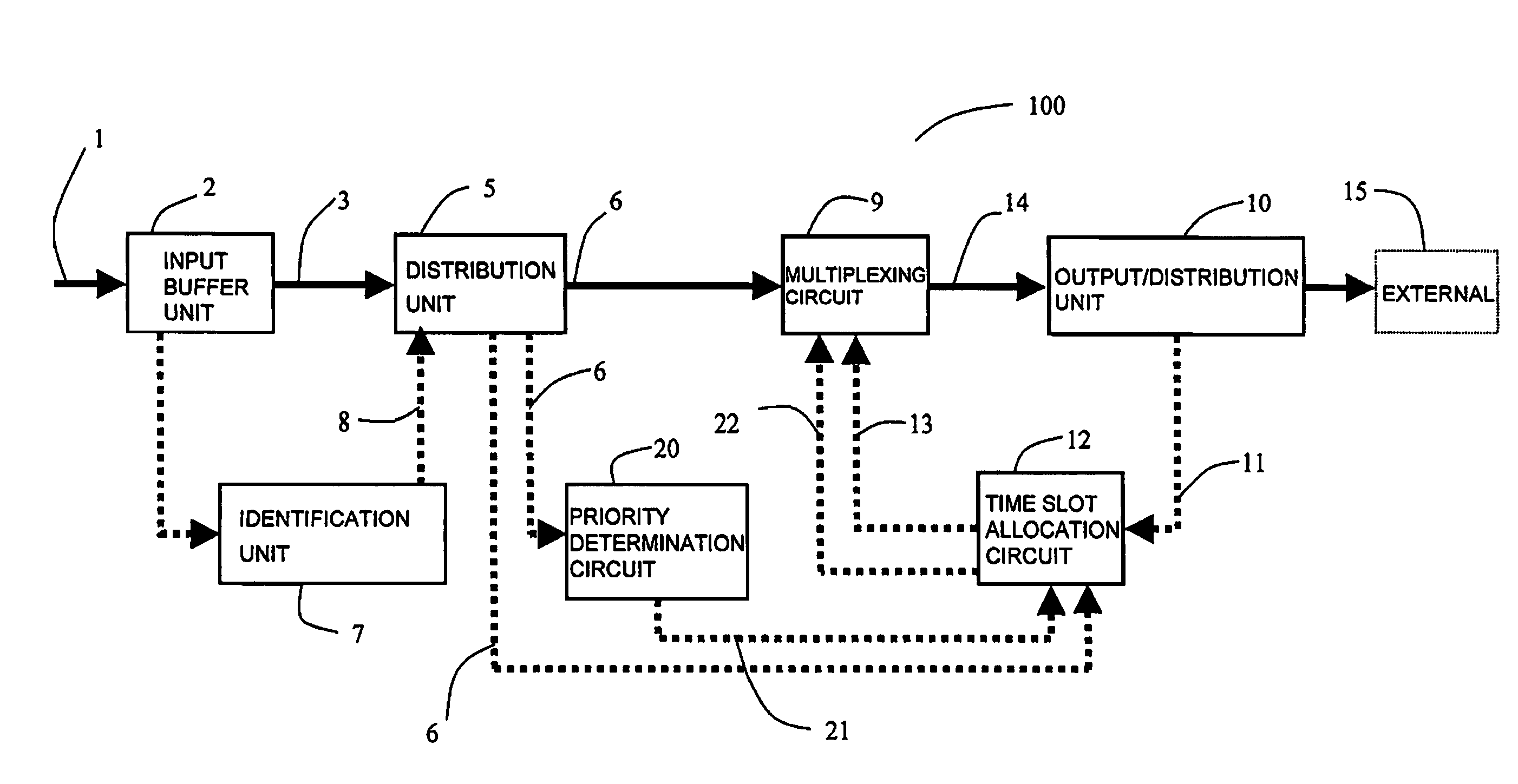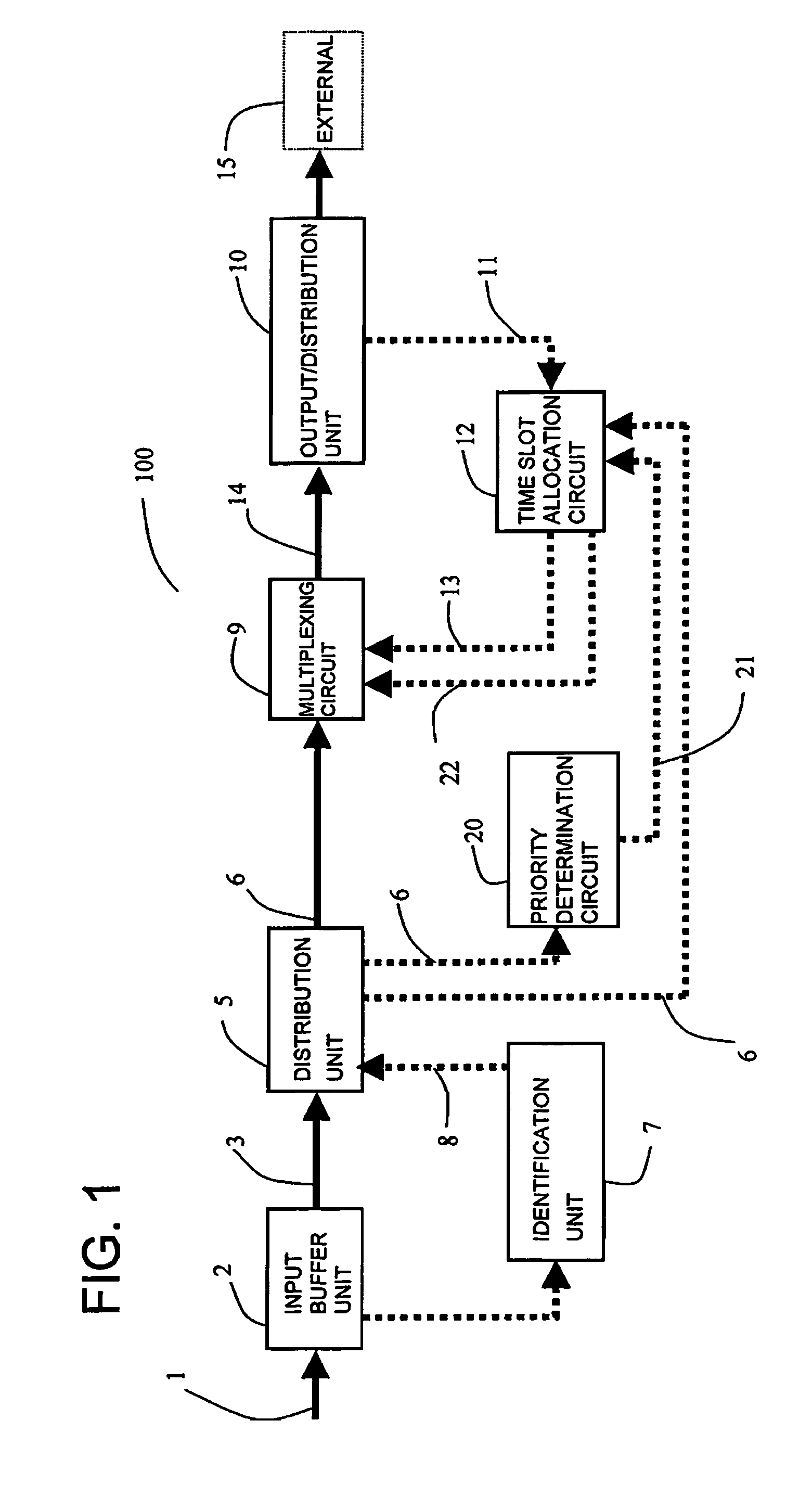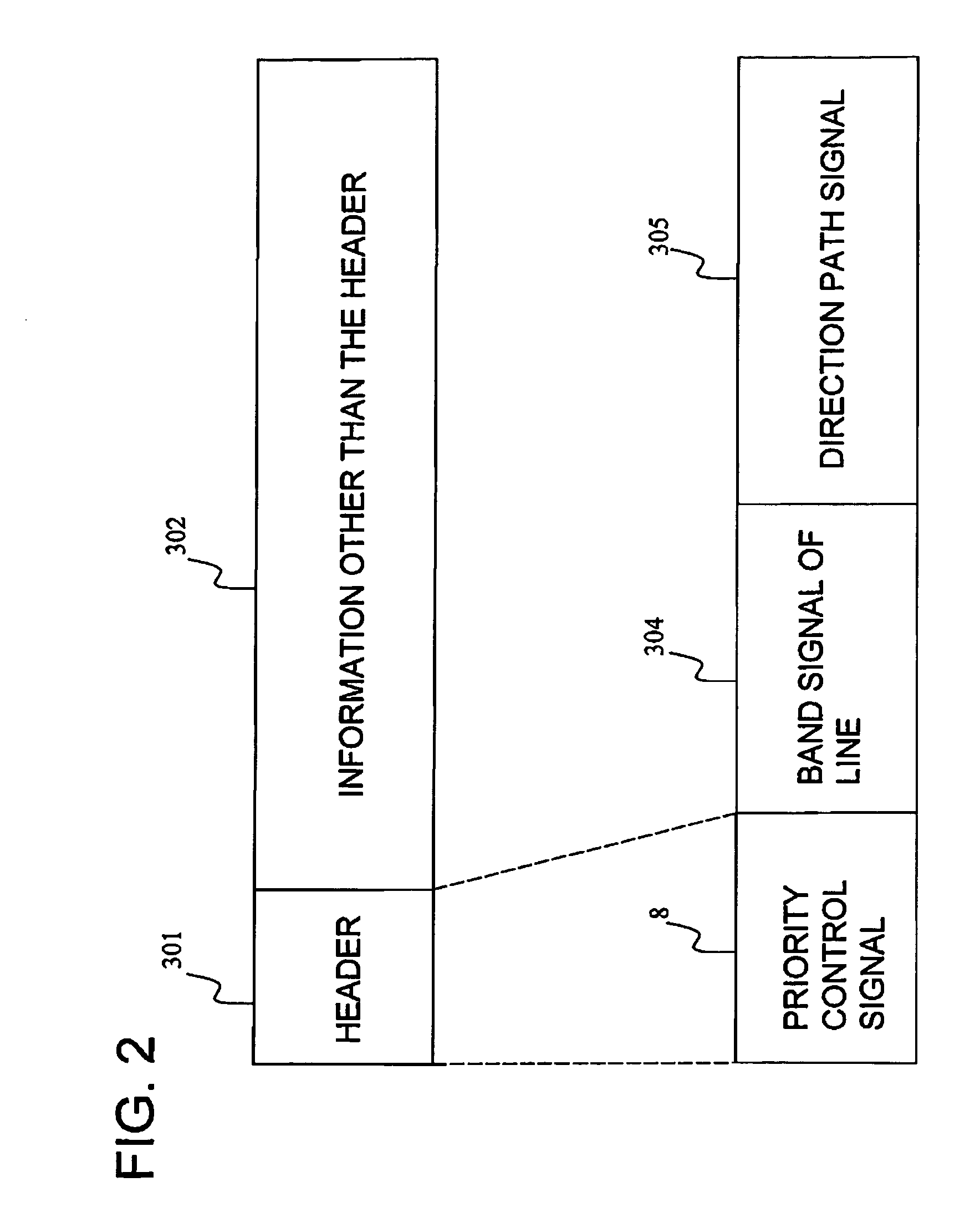Exchange node and exchange node control method
a control method and node technology, applied in the field of exchange node and exchange node control method, can solve the problems of inability to ensure reliability and adequate voice quality, and inability to completely guarantee the quality of real-time communication, etc., to achieve the effect of reducing the delay time in communication, ensuring communication quality, and reducing the delay tim
- Summary
- Abstract
- Description
- Claims
- Application Information
AI Technical Summary
Benefits of technology
Problems solved by technology
Method used
Image
Examples
first embodiment
[0467]FIG. 1 is a schematic view showing one form of an exchange node 100 according to the present embodiment. The exchange node 100 includes an input buffer unit 2, an identification unit 7, a distribution unit 5, a multiplexing circuit 9, a time slot allocation circuit 12, and an output / distribution unit 10. More preferably, a frame compression circuit 46 and a frame decompression circuit 18 and a priority judgment circuit 20 described in FIG. 2 are further arranged. The solid line shown in FIG. 1 indicates the flow of main data, and the broken line indicates the flow of control data.
[0468]The input buffer unit 2, connected to a transmission path of the input data 1 which is connection type packet data, writes the input data 1 to a shift register. After the writing of the input data 1 is completed, the input buffer data 3 is output. The exchange node 100 according to the present embodiment performs priority controls when the input data 1 is connection type packet data that contain...
second embodiment
[0485]FIG. 4 is a schematic view showing one form of an exchange node 200 according to the present embodiment. The difference in configuration from the exchange node 100 according to the first embodiment is that a frame compression circuit 16 and a frame decompression circuit 18 are further arranged. The frame compression circuit 16, which is input with the priority control processing data 6 from the distribution unit 5, compresses the time width of the priority control processing data 6 and outputs compressed data 17. The multiplexing circuit 9, which is input with the compressed data 17 as opposed to the priority control processing data 6 of the exchange node 100 according to the first embodiment, outputs the multiplexed data 14 by the time slot specifying signal13 and the “time-series order” of time slot signal 22 from the time slot allocation circuit 12. The frame decompression circuit 18, which is input with the multiplexed data 14 from the multiplexing circuit 9, decompresses ...
third embodiment
[0500]FIG. 29 shows an example of a correspondence relationship of a time slot in one frame of the time division multiplexing line and the direction path on the output side using the exchange node 100 according to the first embodiment or the exchange node 200 according to the second embodiment. In FIG. 29, one example on how each input data (IP data) of different data length transferred with an IP address is specified with the time slot number when a plurality of connections having the same speed for the input side transmission path is established is shown. One frame of the time division multiplexing line in the exchange node is assumed as 125 μsec in FIG. 29. The IP data 1 of 128 bytes and the IP data 2 of 64 bytes are input from the transmission path 1 of 100 Mb / s. The IP data 3 of 64 bytes and the IP data 4 of 128 bytes are input from the transmission path 2 of 100 Mb / s. With regards to the inputs, the time slot allocation circuit 12 specifies two time slots in time of call set-u...
PUM
 Login to View More
Login to View More Abstract
Description
Claims
Application Information
 Login to View More
Login to View More - R&D
- Intellectual Property
- Life Sciences
- Materials
- Tech Scout
- Unparalleled Data Quality
- Higher Quality Content
- 60% Fewer Hallucinations
Browse by: Latest US Patents, China's latest patents, Technical Efficacy Thesaurus, Application Domain, Technology Topic, Popular Technical Reports.
© 2025 PatSnap. All rights reserved.Legal|Privacy policy|Modern Slavery Act Transparency Statement|Sitemap|About US| Contact US: help@patsnap.com



